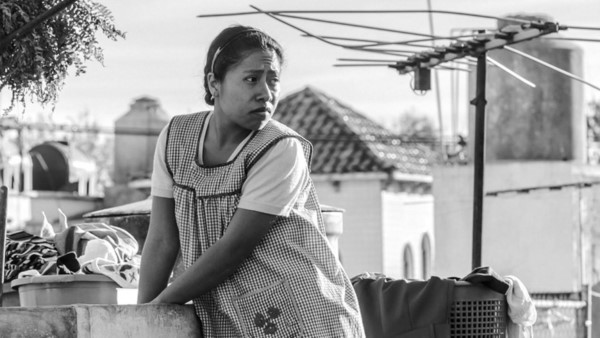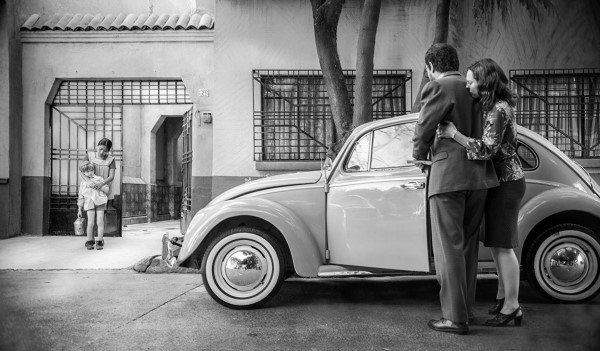Roma Review

Alfonso Cuarón’s “Roma” looks a lot like a black-and-white photo exhibition, one in which the photographs are both personal and part of a larger historical narrative. It is all at once intimate and nostalgic yet documentative and unfiltered. Whether it leaves you cold or comforted, “Roma” possesses unmistakable artistry of the highest order, cementing Cuarón as one of today’s absolute best.
Taking place in Cuarón’s native Mexico City in the early ‘70s when he would’ve been about 10, “Roma” serves as both memoir of and a love letter to Cuarón’s childhood maid and caretaker. It follows Cleo (Yalitza Aparicio), an indigenous/Mixtec worker for a well-off family of six, capturing the ins-and-outs of her daily life and a couple major forces that disrupt it, depicting therein class divides and familial and personal struggle.
Cuarón clearly felt deep appreciation and sympathy for the woman whom Cleo represents, but his story and approach are also suggestive of someone wrestling with guilt, or at least hoping to uncover a deeper and more sensitive understanding of the person she was. The film feels like an exercise in him trying to hold memory and reality at once, both her personal reality and the political and class realities of 1971.
From the opening credits – a single take of water rushing to a drain that reflects images of the outside world – Cuarón showcases total mastery of his craft while imbuing his film with rich symbolism. Water and airplanes are among two of the strong, recurring motifs that lend the story a literary quality. These visual metaphors provide an engaging depth to the film in the way they serve as complements to the photorealism of the images.

Per usual, Cuarón favors long takes and tracking shots in “Roma” as with his previous films, only they feel less about spectacle here (compared to “Gravity” and “Children of Men,” both action-oriented). Instead, long takes down Mexico City streets and Cleo walking through rooms of the house establish a rhythm and a context to daily life, and in the most heightened, dramatic moments, enhance the realism with a powerful “real time” feel.
Similar to “Children of Men,” “Roma” also revolves around a pregnant character trapped amidst outside forces. In “Roma,” we see Cleo against backdrops of both natural disaster (an earthquake, a forest fire) and political turmoil (university student protests), as well as some familial conflict in the family she works for. Cuarón gives us portraits of Cleo, some still and some moving, that show her in stark contrast to something happening around her, conveying a sense of unfairness or imbalance. These constantly opposing forces come together in the film’s climactic beach sequence, one of the finest on-screen executions of the decade.
To top it all off, Cuarón coaxes a credible and moving performance from a total novice in Aparicio. Her acting isn’t always crucial to the film, but there are a couple moments that downright depend on her. Given the extent to which “Roma” is a stunning visual achievement, Aparicio deserves credit for being more of a linchpin to its success than most viewers will realize.
Ironically, small-screen titan Netflix’s biggest achievement to date will be a film that deserves a big-screen experience. If you’re excited about or deeply interested in “Roma,” do yourself the favor of finding a large-format option.
5/5 Stars
Roma
Written and Directed by Alfonso Cuarón
Starring: Yalitza Aparicio, Marina de Tavira, Veronica Garcia




1 Comment